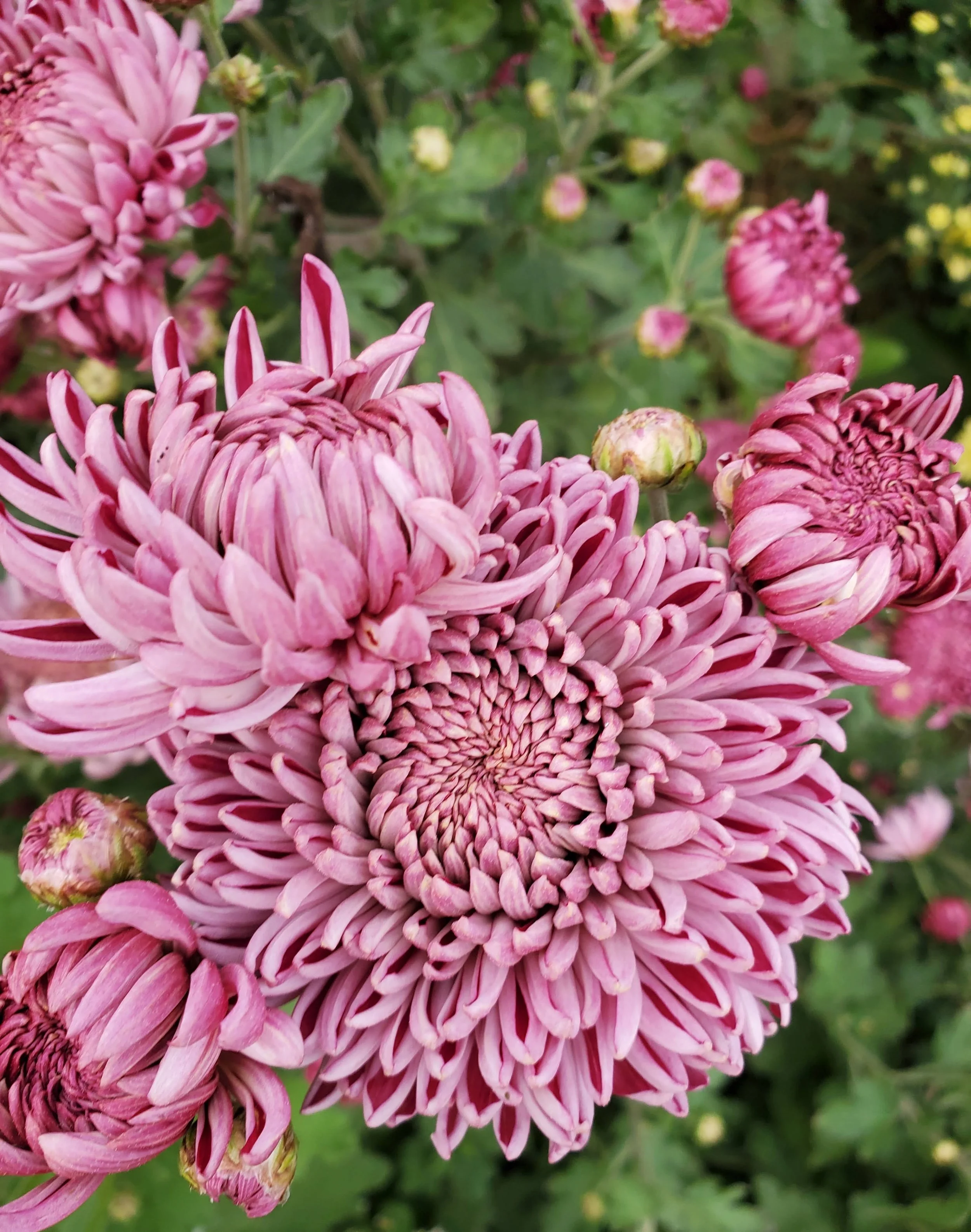Over Wintering Heirloom Chrysanthemums
Heirloom chrysanthemums are worth every bit of effort you put into them. These aren’t your grandma’s porch mums—although maybe they are, if your grandma loved growing fantastic, unique fall flowers. These heirlooms are easy to grow and hardy from USDA Zone 7a and south. Once you have a plant established, even if you dig it up each season, it will continue to thrive year after year.
Mums are truly special because they’re rare and making a comeback with growers like you who want to preserve them season after season. By overwintering them, you help keep cultivars alive year after year. Unlike the average fall mums you see at the garden center for porch decorations, heirloom chrysanthemums are planted in spring or early summer, grow all season, and bloom from late September through mid-November.
They come in a wide range of colors, sizes, and shapes—from big bold blooms to small, delicate flowers that seem to sparkle in the fall sunshine. At one time, heirloom mums were widely grown in the United States for the floral trade. In the 1980s, much of that production was shifted to Central and South America. Thankfully, farmers and home gardeners are bringing these beauties back. I hope we don’t lose any more of these old-fashioned flowers with such a rich history stretching back generations.
Two Ways to Overwinter Heirloom Mums
1. Overwintering in the Ground
One option is to heavily mulch your mums at the end of the season. Once the plants have finished blooming and cold weather sets in, it’s time to prepare them for their winter nap.
Cut the stems down to just a few inches above the ground.
Cover the crown of the plant with several inches of compost or mulch, tucking it in like a blanket.
The goal is to keep the roots insulated. If the roots freeze, the plant won’t come back in spring.
Heirloom mums are generally hardy to Zone 7. In colder zones, they need protection to make it through winter. Here in our Zone 6a garden, we’ve had success overwintering varieties like Prom King, Prom Queen, and Matchstick. We think these survive thanks to their vigorous growth, which helps them build strong root systems. Other varieties may be hardy as well, but we haven’t trialed them yet—it’s still on our long “to-do” list.
If you live in a mild climate with less severe winters, overwintering mums in the ground with protection is often successful.
Here our mums are finished blooming in our unheated high tunnel. They are ready to be cut down and dug up. This was taken in December and there is snow on the roof of the high tunnel but the ground is not frozen and the mums are doing just fine in the cold.
2. Digging and Storing Indoors
The second method is to treat heirloom mums like tender perennials and dig them up before the ground freezes. This is the method we use on our farm. We dig and store all of our mums in our heated greenhouse over winter.
Here’s how:
Cut the plant back, leaving 2–3 inches of stems.
Dig up the entire root ball, making sure to get as many roots as possible. Mums send out new roots in the fall, and these will fuel growth next season.
Pot the plant into a shallow mum pot or any container you have. The roots don’t need much depth to survive winter. We prefer fresh potting mix, but soil from the garden will also work.
Once your mums are potted, you have a few options for storage:
Garage or basement: As long as the plants won’t freeze, they can stay dormant in a cool, dark spot. They won’t need much light until spring.
With houseplants: You can keep them indoors with other plants, but they likely won’t grow much until the days lengthen.
Greenhouse: We keep ours in a heated greenhouse at about 50°F in December and January, then raise the temperature in February to wake them up. By March, they’re green, full, and growing strong.
Walk-in cooler: In the past, we’ve overwintered mums in pots in our cooler, which we set around 45°F when it’s not in use for fresh flowers. This works well for keeping them dormant.
Waking Them Up in Spring
Mums stored in a greenhouse will naturally start putting on growth as the days lengthen in late winter. Those kept in cooler, darker places like a garage or basement will stay dormant until moved to warmth and light. As long as the ground is workable and not frozen, mums can be replanted outdoors in early April. They’re cold-tolerant and bounce back quickly.
Watering Tips
The trickiest part of overwintering mums is managing water. They don’t like to be bone dry, but too much water can cause rot.
Water well at the time of potting.
If stored in a garage or basement, check pots occasionally and water lightly if the soil dries out completely.
In our greenhouse, we water at potting, then rarely again until January or February.
It may take some experimenting to get watering right, but mums are resilient and often pull through even if conditions aren’t perfect.
Mums over wintering in our greenhouse enjoying some sunshine.
Final Thoughts
However you choose to overwinter your mums, the most important step is to just try. Every region and setup is a little different, and you’ll learn what works best for you. I’ve made plenty of mistakes along the way, but mums are tough and forgiving.
With care, your plants will grow bigger and stronger each year, rewarding you with more and more blooms each fall.


























